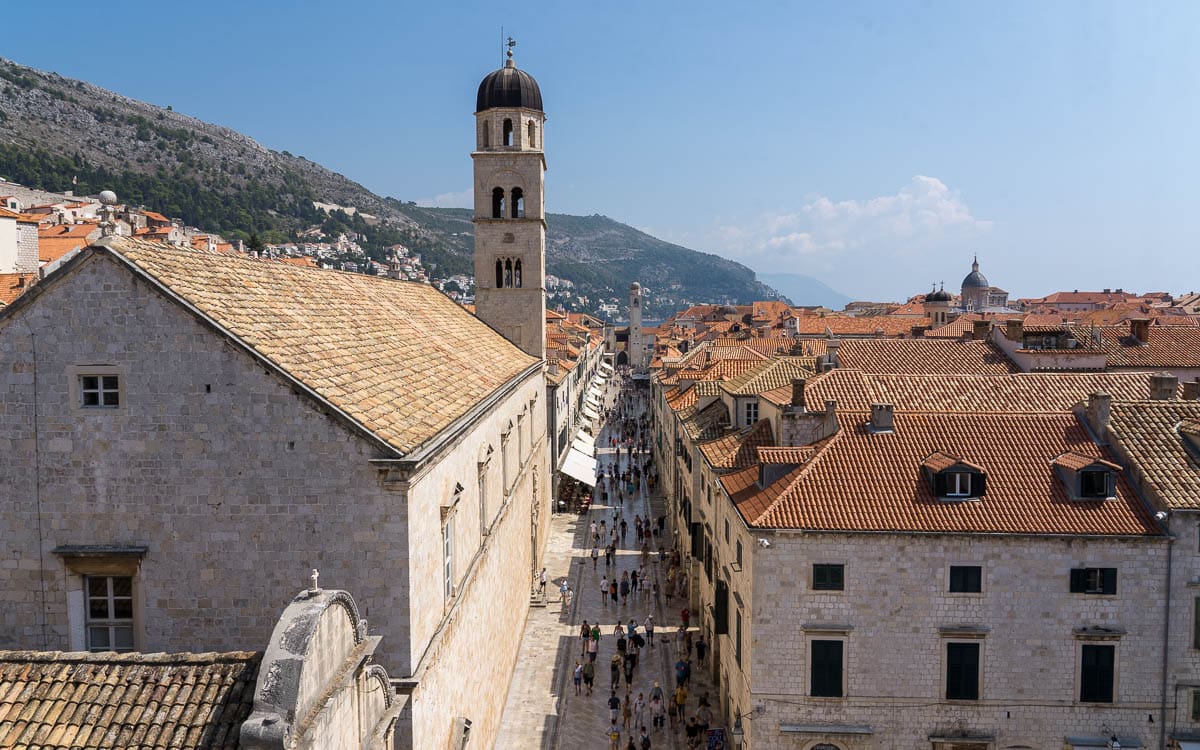
Stradun, officially Placa, is Dubrovnik’s main street, stretching 300 meters from Pile Gate in the west to Luža Square in the east. Along the limestone-paved street, which cuts through the heart of Dubrovnik, are many historical sights, restaurants, bars, cafes, and shops.
Along Stradun, you will find some of Dubrovnik’s most important sites, including the Large Onofrio Fountain, Sponza Palace, the Church of Saint Blaise, and Dubrovnik Bell Tower.
The name “Placa,” commonly used by locals, comes from the Latin word “plateau,” meaning “broad street.” The name “Stradun” comes from the Venetian word “stradone,” meaning “big street,” derived from Italian “strada.” This name reflects the historical ties between Dubrovnik and Venice.
Before the 11th century, the area where Stradun is today was a marshy channel separating two settlements, Ragusa and Dubrava. Roman refugees lived on the island of Ragusa, while Slavs settled on Dubrava mainland.
In the 11th century, the marshy channel was filled, connecting the two settlements and forming Stradun. In the 13th century, Stradun became the main thoroughfare of Dubrovnik. By 1468, the street was fully paved in limestone, as it looks today.
The 1667 Dubrovnik earthquake and subsequent fire destroyed much of the city, including its original buildings along Stradun.
To prevent a similar incident, the government decided to rebuild the buildings in the city in a uniform Baroque style, with shops on the ground floor and living quarters on the floors above.
Stradun has been a popular hub for merchants for centuries and remains so today. Many souvenir shops and other stores still line the street. As you walk down the street, notice the distinct P-shaped shop windows designed to provide maximum views of goods.
The street is home to many restaurants and cafes, as well as shops. Along the street, you will find taverns (konobas), seafood restaurants, Italian restaurants, bistros, snack bars, and gelaterias selling homemade gelato.
Stradun is also home to festivals throughout the year, including the Feast of St. Blaise, the Dubrovnik Summer Festival, the Dubrovnik Winter Festival, and New Year’s Eve celebrations.